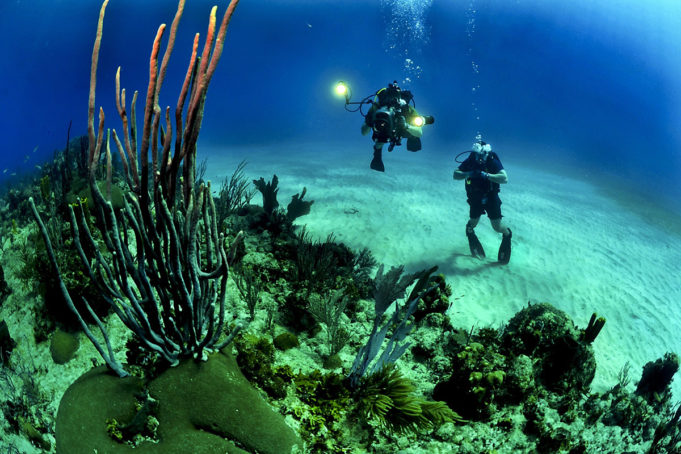If you’ve never considered giving scuba diving a go, then … think again! Did you know that our planet consists of 71% oceans? NOAA’s National Geophysical Data Center estimate there are 321,003,271 cubic miles of water within these vast areas.
But just what resides is in this huge part of Planet Earth? Tracerco, specialists in subsea pipeline inspection, take a look at what’s in our oceans …
Life … as we know it!
The oceans are teeming with life. We already recognise thousands of species of marine life which reside in the ocean, though many are still to be discovered, and some scientists believe that the true number could be in the millions.
The coral reefs are a haven for living creatures. There are around 4,000 species of coral reef fish found worldwide, which makes up nearly a quarter of the world’s marine fish species, though be aware that a millilitre of ocean water contains close to one million bacteria and 10 million viruses.
Depths and amazing sights
The deepest ocean area is The Mariana Trench. It’s located in the western Pacific Ocean and to the east of the Mariana Islands, and the deepest point here is an estimated 11,000 metres (36,000 feet). The average depth of the Earth’s oceans is also 3,720 metres (12,200 feet)
I bet you wouldn’t have guessed that Earth’s longest mountain range is actually underwater? Named the Mid-Oceanic Ridge, this mountain chain stretches for more than 56,000km across and covers parts of the Atlantic Ocean, the Indian Ocean and the Pacific Ocean. Meanwhile, Earth’s highest mountain in the ocean is the Mauna Kea. Found off the coast of Hawaii, the mountain rises for 10,203 metres (33,474 feet) from the ocean floor, with 4,170 metres (13,680 feet) viewable above sea level.
The Great Barrier Reef is the largest living structure on Earth. It measures around 2,600km and is so huge that it can be spotted from the Moon.
Would you believe that volcanoes can exist underwater? Near to the Gulf of Mexico, on the ocean’s floor, brine pools are found, as too are underwater volcanoes in which mud and methane explode from them as opposed to lava. There are also underwater hot springs found across the Earth’s oceans, where water with temperatures of 650°F shootout — that’s hot enough to melt lead.
There is so much left to discover, too. National Geographic states that we have only explored around five per cent of the Earth’s oceans to date, meaning that more detailed maps of Mars are available than those of our planet’s ocean floor.
What’s to be found?
If you combined all the items in the world’s museums, it still wouldn’t be more than the ocean’s artefacts. There is almost 20 million tons of gold within the Earth’s oceans too — if all which was suspended was mined, there would be enough to give each person on the planet around 9 pounds of gold. There is up to $60 billion in sunken treasure housed on the floors of Earth’s oceans as well.
What about the science? Scientists believe there could be up to 50 quadrillion tons of dissolved solids found within the Earth’s oceans, with magnesium salts, potassium salts, calcium salts and sodium salts making up the bulk of this enormous figure.
And rubbish gets everywhere, unfortunately! There are an estimated 14 billion pounds of garbage dumped into the world’s oceans annually though, with the majority of this being hazardous plastic.
Communication and trade
Shipping accounts for much of the world’s trading. More than 90 per cent of trade between nations is transported is carried by ships, while around half of communications between nations occur using underwater cables.














